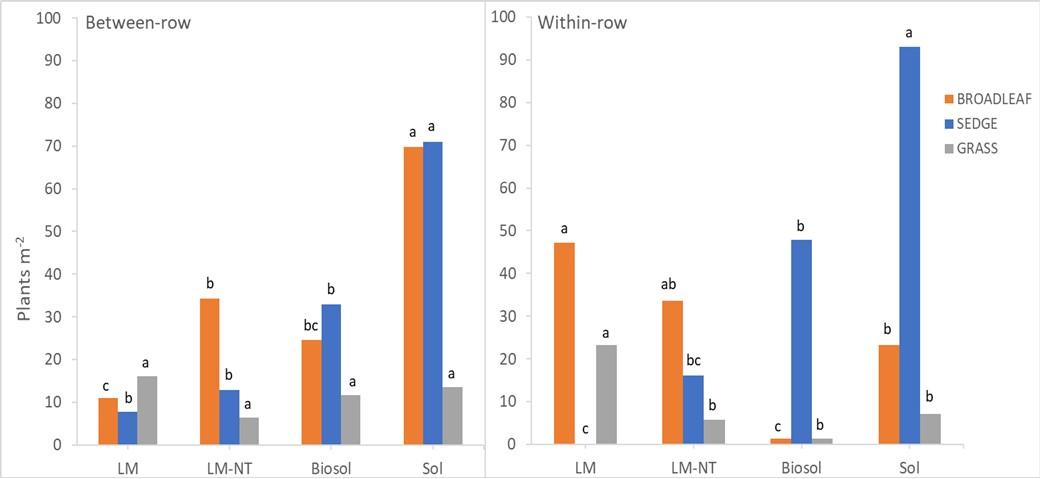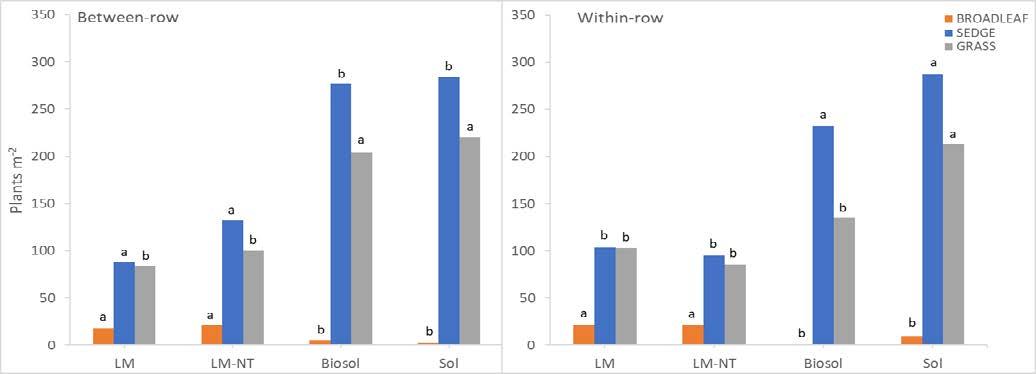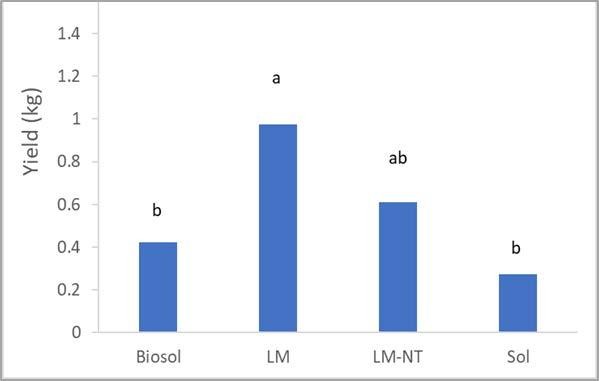
Evaluating Biosolarization as a Weed Management Tactic in Organic Vegetables
Biosolarization, akin to solarization, is a soil disinfection technique but involves the addition of organic amendments before the passive solar heating process. As the damp soil warms, organic materials break down, releasing allelochemicals and other biotoxic compounds briefly into the soil. After roughly 14 days of biosolarization, the transparent plastic mulch is removed, allowing the soil to aerate for seven days before transplanting crops. Research has demonstrated that biosolarization can increase weed seed mortality and reduce soil pathogens. Biosolarization is well-suited for organic farming and can be employed in regions where solarization may have limited effectiveness. Fruit processing by-products (pomace) stand out as promising soil amendments for biosolarization due to their rich organic content, absence of biohazard risks (unlike animal waste), and cost-effectiveness.
During the 2022 and 2023 growing seasons, a research study was conducted at the Central Maryland Research and Education Center in Upper Marlboro. The study had two primary objectives: first, to develop an innovative approach for vegetable farmers to address multiple crop pests; and second, to assess the weed management capabilities of a fruit-based biosolarization, living mulch, and strip tillage system, both individually and in combination. In the first season, the study focused on eggplant, which was grown in four different treatments: 1) in living mulch with no-till (LM-NT), 2) interplanted with cover crops (LM), 3) in soil subjected to solarization (Sol), and 4) interplanted with cover crops and grown in biosolarized soil (Biosol).
In the fall, a mix of red clover and cereal rye was planted on 6-inch rows in LM, Biosol and Sol plots, with LM-NT featuring alternating rows of red clover and cereal rye (6 rows of rye followed by 4 rows of red clover). During the spring, specific actions were taken for each plot. LM-NT plots were entirely roller-crimped, LM plots were entirely roller-crimped then the crop row was strip-rotavated 40 inches wide. Sol plots were mowed and rotovated, then transparent plastic mulch and drip lines were laid in the crop row. Biosol plots were mowed, the crop row was strip-rotovated, pomace was incorporated into the stripped row, then transparent plastic mulch and drip lines were installed. Biosolarization was carried out for 14 days, after which the plastic mulch was removed, and the soil was aerated for 7 days before crop transplant. During the study, data were collected from each plot, including weed species and abundance at 2, 4, 6, and 9 weeks after crop transplant (WAP), both between and within the crop rows. Data related to crop growth, such as height and yield, were also collected.

Our results indicate that Biosol plots consistently had the lowest number of within-row broadleaf weeds at all ratings (Figs. 1 & 2). In contrast, within-row broadleaf weeds were greatest in LM plots at all ratings (Figs. 1 & 2). Additionally, sedge weeds were more prevalent in Biosol and Sol plots compared to LM and LM-NT plots across all ratings (Figs. 1 & 2). During early-season rating, LM plots had the highest number of grass weeds (Fig. 1). However, by the late-season rating, Sol plots had the highest amount of grass weeds (Fig. 2). Furthermore, it is noteworthy that all treatments, except for LM, exhibited greater weed biomass in the between-row areas compared to within-row (Fig. 3). Lastly, when considering mean yield, we observed the highest yields in LM plots, followed by LM-NT, Biosol, and then Sol plots (Fig. 4).


The results of our study provide some insights into the effectiveness of biosolarization in managing different weed types. It appears that this technique is quite effective in inactivating broadleaf weed seeds, but its impact on sedge control is relatively minimal. This discrepancy can be attributed to the fundamental differences in the reproductive and emergence patterns of these three weed categories: broadleaves, sedges, and grasses. In our plots, broadleaf weeds predominantly comprised of summer annuals. In contrast, the primary sedge species we encountered was yellow nutsedge, a perennial plant that primarily reproduces through tubers that sprout from creeping rhizomes. It's worth noting that neither solarization nor biosolarization had a significant negative effect on the yellow nutsedge tubers. The increased tillage associated with the Biosol and Sol treatments may have actually encouraged yellow nutsedge emergence. In contrast, conservation tillage plots (LM and LM-NT) demonstrated greater success in suppressing yellow nutsedge growth, potentially due to the minimal soil disturbance in the no-till treatment. Moreover, the presence of cereal rye residue in these plots helped maintain relatively cool soil conditions and blocked the light stimuli required for the buds on nutsedge tubers to emerge.
Grass weeds present in the plots were mainly from foxtails, crabgrass and goose grass. These grasses, unlike yellow nutsedges, are primarily annuals. Therefore, biosolarization effectively neutralized their seeds, leading to early-season control. However, it is important to note that this efficacy diminished considerably by the final rating, indicating that biosolarization may also be inhibiting seed germination and emergence.
Our findings suggest that biosolarization could be a promising weed management strategy, particularly within the crop row. Furthermore, it holds potential as an integrated weed management technique in organic vegetable production. Nonetheless, it's crucial to emphasize the need for further research to validate these results and establish the consistency of treatments.
This article appears in October 2023, Volume 14, Issue 8 of the Vegetable and Fruit News
Vegetable & Fruit News, October 2023, Volume 14, Issue 8
Vegetable and Fruit News is a statewide publication for the commercial vegetable and fruit industries and is published monthly during the growing season (April through October). Subscribers will receive an email with the latest edition.
Subscribe